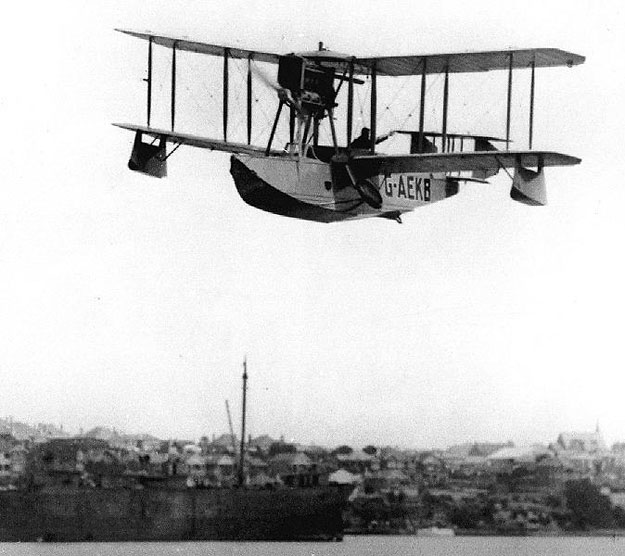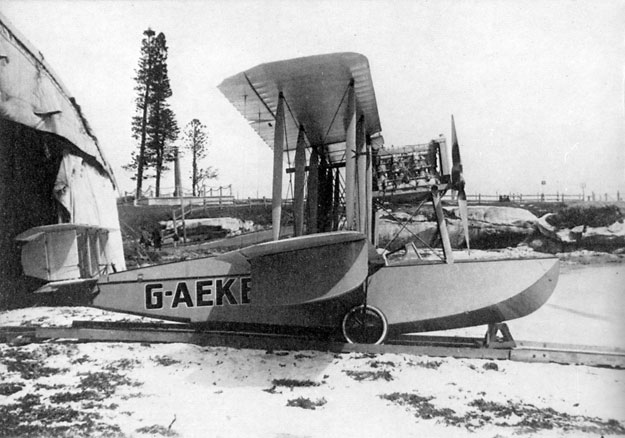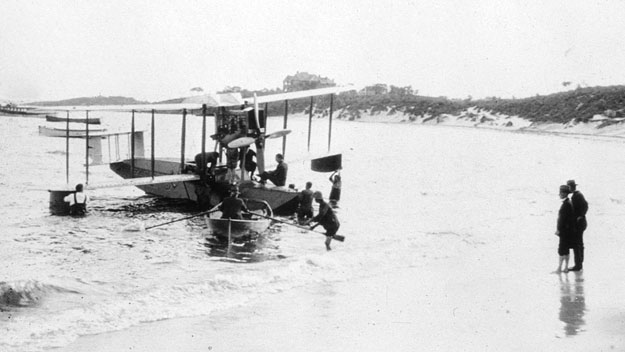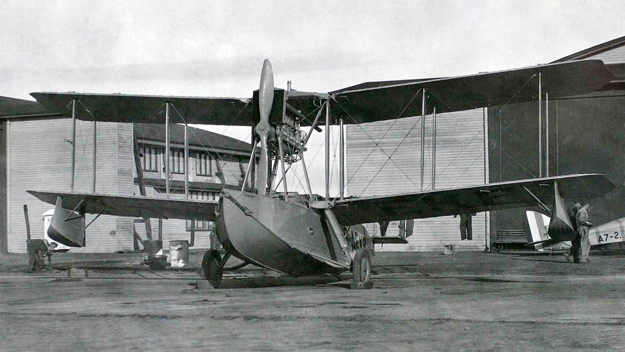
One
of the most idiosyncratic aircraft that was ever nominally in the 'Departmental'
fleet was Wackett Widgeon I G-AEKB.
At the end of the First World War, Major (later Sir) Lawrence Wackett returned to Australia following distinguished service, including some aircraft engineering experience, in the Australian Flying Corps. Becoming one of the cadre of officers forming the fledgeling Royal Australian Air Force, Wackett had a great belief in the need to develop an indigenous aircraft industry. He completed a Bachelor of Science at Melbourne University, and followed this with two years of advanced training in aircraft design under Frank Barnwell, designer of the Bristol Fighter of the First World War and, later, the Bristol Beaufighter of the Second World War.
In 1923 Wackett became aware of the disposal of war surplus machine tools from a workshop in Randwick, Sydney, and managed to convince the Air Board to acquire it for the purposes of the production of aircraft components and even complete aircraft. Securing the support of the Minister for Defence, E.K. Bowden, Wackett was placed in charge of what became the RAAF Experimental Station.
Wackett tried to obtain Air Force sanction to design and build an entirely Australian aircraft, but the Air Force, stretched for funds as it was, would not support the suggestion unless Wackett could obtain funds from some other source. Wackett then approached the Controller of Civil Aviation, Col. H.C. Brinsmead, and managed to pursuade the Civil Aviation Branch (of the Department of Defence) to fund the construction of a small flying boat.
The resulting product was the Wackett Widgeon I, a wooden hull flying boat powered by an Armstrong Siddeley Puma of 230hp. The development cost of £7,180 was borne by the CAB. This aircraft, the first flying boat to be wholly designed and constructed in Australia, was registered to the Civil Aviation Branch out of the Australian sequence (i.e. G-AU__) as G-AEKB, after E.K. Bowden, Minister for Defence (which also included Civil Aviation).
The aircraft was launched on 7 July 1925. The photo below shows it at La Perouse, Sydney, at this time. During taxy runs at speed on Botany Bay the following day it hit a sandbank and later overturned whilst attempting a takeoff. Wackett, CCA Lt Col Brinsmead and two mechanics were unhurt. The aircraft was repaired and made its first flight on 3 December.

The
eventual success of G-AEKB prompted authorisation for Wackett to install a more-powerful
300hp Nimbus, and to develop an amphibian undercarriage which can be seen in the
upper photograph. Wackett was also given approval proceed with the design and
construction of the Widgeon II, however as this was funded by the RAAF it is outside
the scope of our story here.
Below: The Widgeon at an unknown place and date.


Following
tests and re-working G-AEKB was transferred to the RAAF and used at 1FTS, Point
Cook, for flying boat training from 1927 (above). The aircraft operated
with the RAAF carrying its civil registration. G-AEKB was approved for disposal
in October 1929, the airframe being broken up and engine transferred back to CAB.
(Photos:
1-CAHS collection; 2-Courtesy Aircaft Pioneer by Lawrence James
Wackett; 3-CAHS/Terry Martin collection; 4-Jack Gillies via Maurice Austin)
Back
to the Departmental Aircraft index
If
this page appears without a menu bar at top and left, click
here